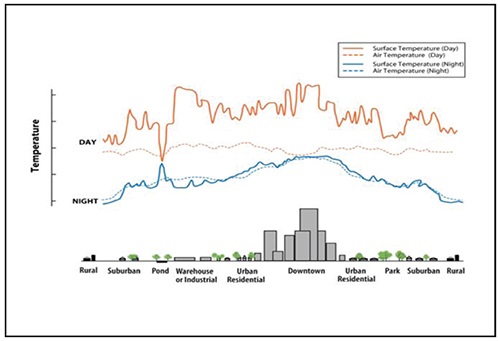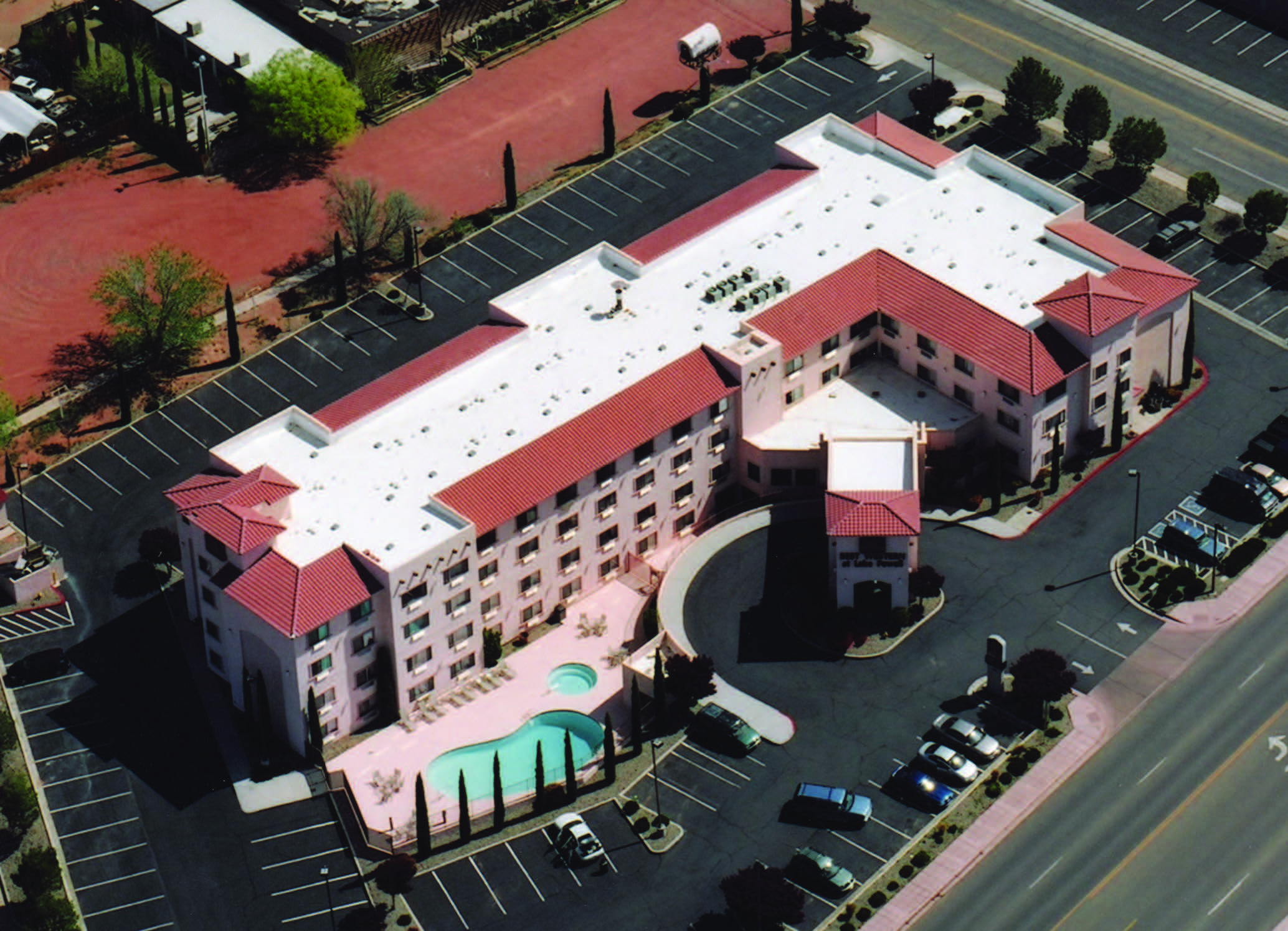Reflective Roofs and Urban Heat Islands
Learning Objectives:
- Understand the basic science behind the urban heat island effect.
- Summarize the risks and consequences of the urban heat island effect on cities and their residents.
- Explain the strategies currently available to mitigate the effects of urban heat islands.
- Evaluate the key criteria for designing and selecting a reflective roofing system to optimize its contribution in mitigating the urban heat island effect.
Credits:
This article provides an overview of the urban heat island effect that impacts almost all major cities across the globe. The article suggests that urban heat islands pose a significant problem, negatively affecting the world economy, environment, public safety and human health.
Based on a review of the available strategies to mitigate the negative consequences of the heat island effect, the article also suggests that reflective roofs offer the most feasible and cost-effective way to immediately start improving conditions in urban heat islands. Finally, the article suggests that cool reflective roofs, when designed and installed correctly, may provide many years of useful service while reducing heat island impacts at the same time.
What is an Urban Heat Island?
As urban areas across the globe have grown in size and density, significant changes have taken place in their landscape. Buildings, roads, parking lots, and other infrastructure replaced open land and vegetation. Surfaces that once were permeable and moist become impermeable and dry. These changes cause urban regions to become warmer than their rural surroundings, forming an “island” of higher temperatures in the landscape. It is important to note that the heat island effect occurs both on the surface and in the atmosphere. By noon on a hot summer day, the sun can heat urban surfaces such as roofs and pavements to temperatures 50 to 90 degrees Fahrenheit hotter than the air. In turn, these surfaces radiate additional heat into the atmosphere, causing a similar but not as extreme increase in air temperature. This atmospheric heating becomes more pronounced after sunset as urban surfaces continue to radiate heat into the surrounding air. According to the U.S. Environmental Protection Agency, the annual mean air temperature of a typical city with one million residents may be 2 to 5 degrees warmer than its surroundings. And on a summer night, this increase in temperature may be as much as 22 degrees Fahrenheit.2

Source: U.S. EPA 3
Figure 1. Typical Urban Heat Island Profile
A cross-section of a typical urban heat island is illustrated in Figure 1.3 The illustration shows how urban temperatures typically are lower at the urbanrural border than in dense downtown areas. The illustration also shows how parks, open land, and bodies of water can create cooler areas within a city.
Figure 1 also helps illustrate the critical relationship between surface and air temperatures. Once heated, the hard surfaces of asphalt and concrete typical in urban areas tend to maintain an increased temperature for almost the entire day. And the heat retained and emitted by these hard surfaces during the evening causes the air temperature at night to become almost identical to the temperature of the heated urban surfaces.
However, one critical factor not illustrated in Figure 1 is the ultimate source of urban heating. With the exception of heat from geothermal sources as well as man-made and natural combustion, over 99 percent of the heat in our atmosphere is a result of solar radiation.4 As a result, almost all temperature effects associated with urban heat islands can be traced to increased absorption of solar radiation by urban surfaces. And as we will discuss later in this article, reducing solar heat absorption is the most critical factor in addressing the problems of urban heat islands.
Why are Heat Islands a Problem?
Elevated temperatures in urban heat islands, especially during the summer, may have numerous negative consequences for the environment and quality of life in urban areas. These adverse consequences may include:
- Increased peak energy consumption and costs. Higher urban temperatures in summer increase demand for air conditioning and related electricity consumption. Studies conducted by researchers at Lawrence Berkeley Laboratory estimate that the heat island effect is responsible for 5 to 10 percent of peak electricity demand.2 In addition, the actual cost for this electricity to the individual building owner may be much higher when peak demand charges are included in the monthly electric bill.5
- Increased risk for brownouts and blackouts. Increased peak air conditioning demand in urban heat islands poses additional risks beyond higher electric bills. Even without the additional heat load associated with heat islands, peak electrical demand in the summer may run dangerously close to the maximum capacity the electric grid can provide. And when the grid fails to meet peak demand, the results may be devastating. As an example, heat island-driven peak demand is closely related to a number of well-known power failures in the United States, including the state of California in 2000 to 2001 and the city of Chicago in 1995. In all of these cases, peak demand for electricity during prolonged heat waves exceeded the capacity of the electric grid, causing frequent brownouts as well as occasional complete failure of the grid.
- Increased air pollution. Increased peak energy demand generally results in greater emissions of pollutants from power plants. And much of this increased pollution may impinge directly on the air in an urban area since the power plants providing peak power frequently are located close to the cities that generate the peak demand. In addition to raising power plant emissions, higher air temperatures also promote the formation of smog, or low-level ozone.
- Compromised human health and comfort. Every degree of increased temperature in an urban heat island makes it more and more difficult for a city’s population to remain comfortable, productive, and even safe in the event of natural emergencies, especially events that may shut down the electric grid. Warmer days and nights, along with higher air pollution levels, can contribute to general discomfort, respiratory difficulties, heat cramps, exhaustion, non-fatal heat stroke, and heat-related mortality.
- Impaired water quality. Hot pavement and rooftop surfaces transfer their excess heat to rainwater, which then drains into storm sewers. This heated rainwater then raises water temperatures as it is released into streams, rivers, ponds, and lakes, causing temperature changes that may be stressful to aquatic organisms. Elevated water temperatures also reduce the oxygen capacity of water and its ability to decompose sewage and other pollutants.

Photo courtesy of Duro-Last









